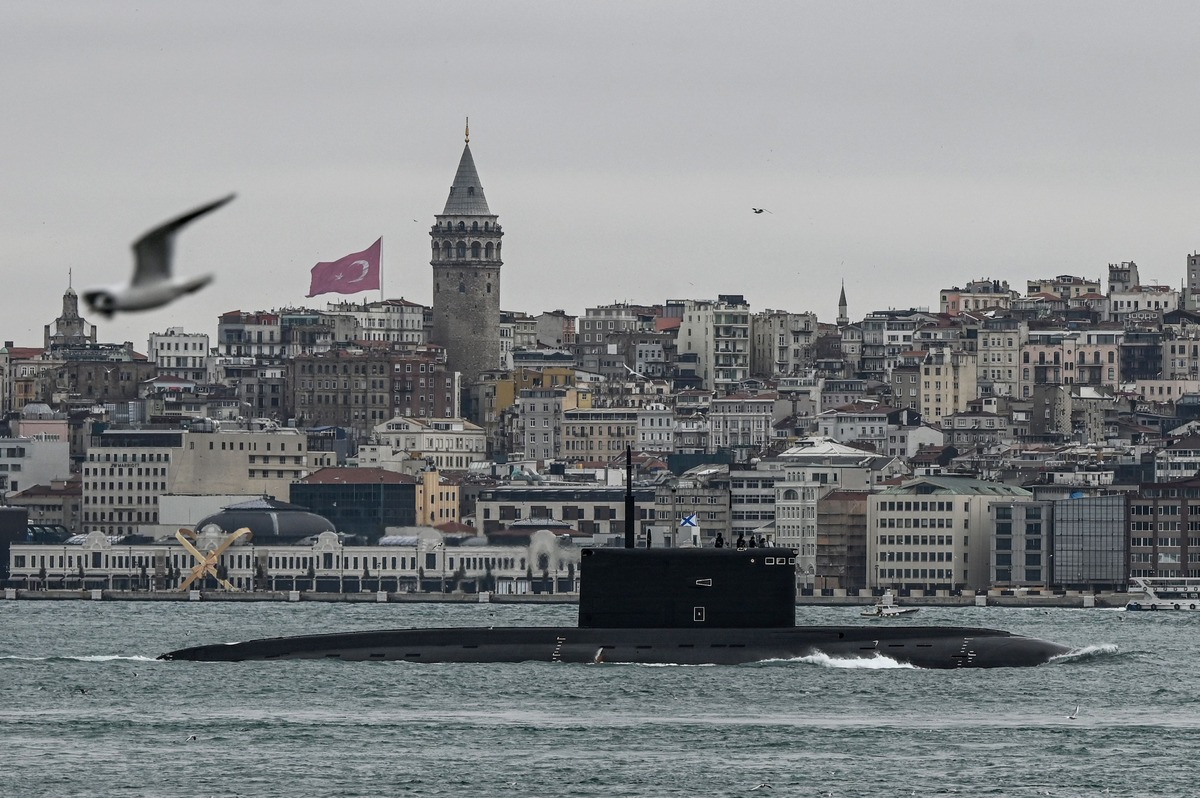Total Russian equipment losses in Ukraine have surpassed $60 billion, according to one estimate, with a few of Russia’s most-valuable systems and platforms packing a bigger punch than others.
Figures compiled by Ukrainian finance portal Minfin.com.ua suggest total Russian equipment losses across land, air and sea in Ukraine have surpassed $60 billion. Newsweek could not independently verify this figure, which is based on data published by Ukraine’s military and calculations by Forbes‘s Ukrainian site, among other sources, and has reached out to the Russian Defense Ministry for comment via email.
Deep into the third year of full-scale war in Ukraine, Russia is able to replenish many of its battlefield losses, including tanks and armored vehicles, after promptly switching its defense industry to a war footing.
However, other losses, such as ships, expensive electronic warfare systems and surveillance aircraft, are harder to replace and come with a far-higher price tag.

In the Air
Ukraine’s military says Russia has lost 357 aircraft, plus another 326 helicopters. Although impossible to independently verify this type of statistic from Kyiv, it is clear the war has dented Russia’s fleet. In mid-April, General Christopher Cavoli, the commander of the U.S. European Command and NATO‘s supreme allied commander in Europe, told lawmakers that Russia’s air force had “lost some aircraft, but only about 10 percent of their fleet.”
Yet not all aircraft were created equal. Ukraine regularly reports shooting down fighter jets, but has sporadically said it succeeded in destroying advanced aircraft that help Russia monitor the war from the skies.
In mid-January, Kyiv said its air force had destroyed one of Russia’s A-50 spy planes and an Il-22 airborne command post over the Sea of Azov.

Russian A-50 airborne early warning and control aircraft flies. Total Russian equipment losses in Ukraine have surpassed $60 billion.
Russian Ministry of Defense
Ukraine said its strikes would delay Russian missile strikes on Ukrainian territory, and prove a painful loss for Moscow. Kyiv said in late February it had downed another A-50.
Command and control aircraft like the Il-22 are expensive platforms decked out with sophisticated technology, making them hard to replace. They are a particularly stinging loss to the fleet, Davis Ellison, an analyst with the Hague Centre for Strategic Studies, told Newsweek. Wagner Group mercenaries also destroyed an Il-22M during the organization’s brief mutiny against the Kremlin in June 2023.
Ukraine has valued each A-50, of which Russia only has a handful, at around $330 million. Earlier this year, Ukraine’s military said Moscow was “trying to replace” its A-50s with reconnaissance drones, although experts told Newsweek that this stopgap measure would have limited success.
On the Sea
Weeks into Russia’s full-scale invasion, its Black Sea Fleet lost its flagship, the Moskva. Moscow said at the time that a fire and a munitions blast had damaged the cruiser, which then lost stability due to hull damage in a heavy storm. Ukrainian officials and Western intelligence said Ukraine’s homegrown Neptune anti-ship missiles were responsible for the sinking of the Moskva. One estimate put the loss of the guided missile cruiser at around $750 million.
In September 2023, Ukrainian-operated Storm Shadow air-launched missiles rained down on the Black Sea Fleet base at Sevastopol, hitting Russia’s Rostov-on-Don submarine.

Pro-Russian supporters wave flags as they welcome missile cruiser ‘Moskva’, which was then a flagship of Russian Black Sea Fleet, entering Sevastopol bay on September 10, 2008. Russia’s Black Sea Fleet has suffered extensive casualties throughout the war, and its flagship was sunk in April 2022.
VASILY BATANOV/AFP/Getty Images
Western intelligence and Ukrainian military reports suggested the submarine was damaged beyond repair. It had a ballpark cost of around $300 million.
Russia has also lost a string of landing ships, each with a hefty price tag. Ukraine has damaged or destroyed several landing ships, including the Minsk, Novocherkassk and Olenegorsky Gornyak, also known as Project 775 or Ropucha-class vessels.
According to Ukrainian media, a Ropucha-class ship cannot be directly swapped for a new vessel, meaning a replacement vessel would likely cost upward of $214 million.
Previously secure naval vessels coming under fire and sustaining damage can have a real impact on morale, as well as on the fleet, added Ellison.

Russian Navy’s diesel-electric submarine “Rostov-on-Don” sails through the Bosporus on the way to the Black Sea past the city of Istanbul, Turkey, on February 13, 2022. The vessel is one of several high-profile Russian losses in the more than two years of war.
OZAN KOSE/AFP via Getty Images
On the Ground
It is a bruising hit anytime Ukraine successfully strikes Russia’s advanced air-defense systems, such as parts of its S-300 and S-400 batteries.
Ukraine has repeatedly targeted S-400 systems. In mid-April, Ukraine’s GUR military intelligence agency said its forces had “destroyed or critically damaged” four S-400 launchers and three radar stations, as well as other equipment, in strikes on the northern Crimean hub of Dzhankoy.
A Ukrainian intelligence source told the BBC in September 2023 that the Ukrainian Navy had used homegrown Neptune missiles to strike $1.2 billion-worth of advanced S-300 and S-400 launchers after disabling accompanying radar systems.
Earlier this week, Ukraine reportedly destroyed two destroyed launchers, plus a damaged command post, belonging to a Russian S-300 or S-400 air-defense system close to the city of Belgorod, across the border from Ukraine’s northeastern Kharkiv region. The Ukrainians likely used a U.S.-donated High Mobility Artillery Rocket System (HIMARS), according to the U.S.-based think tank, the Institute for the Study of War (ISW).

An electronic warfare battalion of Russia’s Western Military District train to use the Krasukha 4 electronic warfare system during an exercise in the Leningrad region in this photo published April 12, 2020. Such equipment is capable of disrupting UAV signals and has reportedly already seen use in Syria, Ukraine and Nagorno-Karabakh.
Russian Ministry of Defense
Losses of electronic warfare systems matter, too, experts say. The likes of the rare RB-109A Bylina electronic-warfare command-and-control system—one of which was reportedly destroyed by Ukraine in January—is a “very significant” loss, said Marina Miron, a postdoctoral researcher at the War Studies Department with King’s College London.
Electronic warfare systems like the artificial intelligence-based Bylina, and the Murmansk-BN, are “very important to defend against drones,” Miron told Newsweek.
During the early weeks of the war, Ukraine captured a-4 electronic warfare system that was heralded as a gold mine for Ukrainian and Western intelligence agencies to dissect. A “crown jewels” system, this type of loss for Russia offers up a wealth of information to help Ukraine, said Ellison.
Uncommon Knowledge
Newsweek is committed to challenging conventional wisdom and finding connections in the search for common ground.
Newsweek is committed to challenging conventional wisdom and finding connections in the search for common ground.



